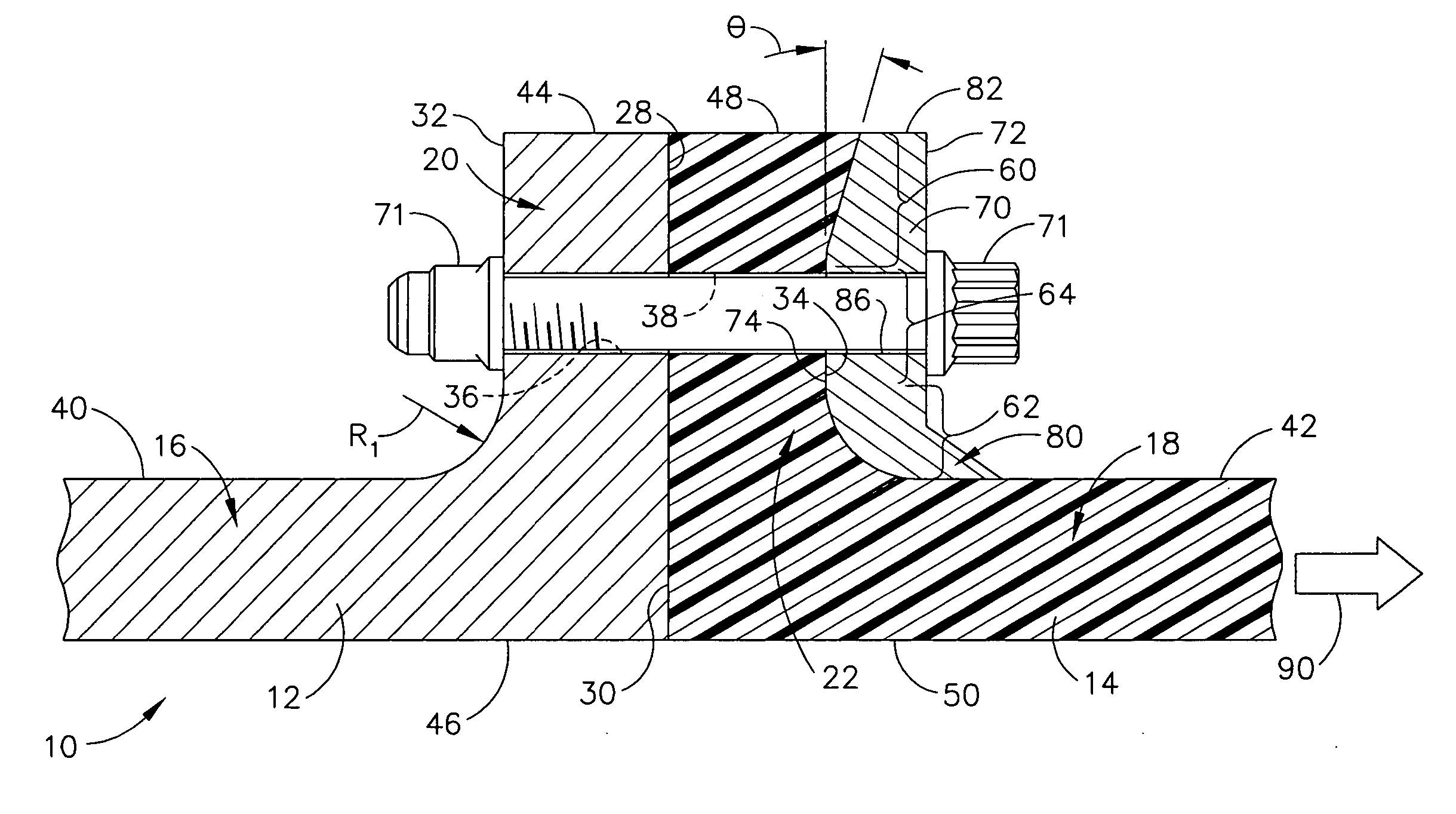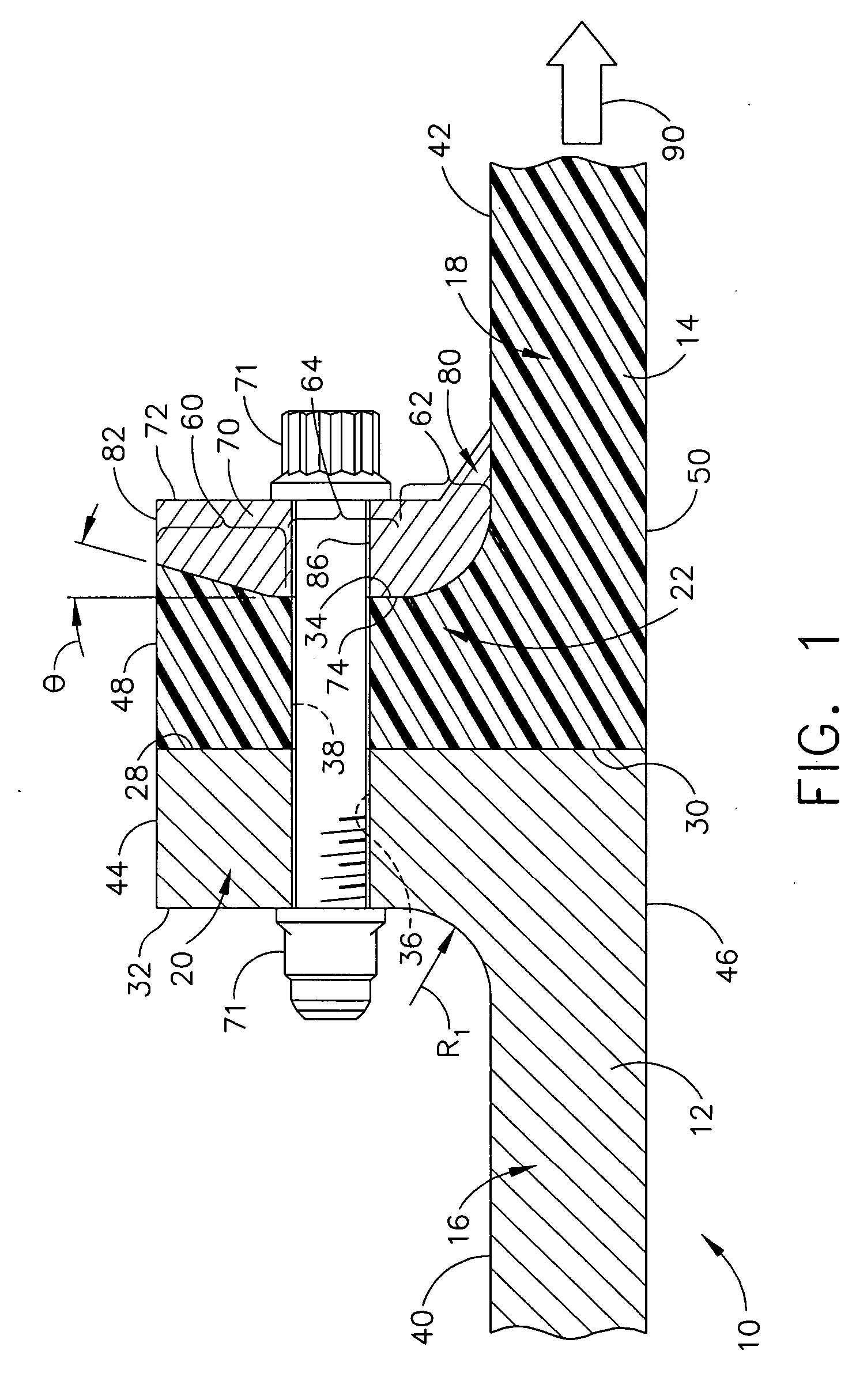Methods and apparatus for assembling composite structures
a composite structure and assembly method technology, applied in the field of composite structures, can solve the problems of premature failure of the flange, vibrational stress and load on the flange, and pull out of the fastener, and achieve the effect of facilitating the distribution of load
- Summary
- Abstract
- Description
- Claims
- Application Information
AI Technical Summary
Benefits of technology
Problems solved by technology
Method used
Image
Examples
Embodiment Construction
[0011]FIG. 1 is a side view of an exemplary embodiment of a coupling assembly 10 that may be used to fasten a pair of components 12 and 14 together. In the exemplary embodiment, components 12 and 14 are casing sections coupled together for use with a turbine engine assembly (not shown). Coupling assembly 10 is not limited to being used with turbine casing components 12 and 14, but rather coupling assembly 10 may be used to couple any adjacent components together as described herein. Accordingly, the specific size, shape, and configuration of coupling assembly 10, as described and / or illustrated herein, is exemplary only. Accordingly, the specific size, shape, and / or configuration of coupling assembly 10 generally, as well as portions thereof, may be selected to accommodate other components than engine casing sections 12 and 14. In the exemplary embodiment, component 14 is fabricated from a composite material.
[0012] In the exemplary embodiment, each component 12 and 14 includes a re...
PUM
| Property | Measurement | Unit |
|---|---|---|
| Structure | aaaaa | aaaaa |
| Shape | aaaaa | aaaaa |
Abstract
Description
Claims
Application Information
 Login to View More
Login to View More - R&D
- Intellectual Property
- Life Sciences
- Materials
- Tech Scout
- Unparalleled Data Quality
- Higher Quality Content
- 60% Fewer Hallucinations
Browse by: Latest US Patents, China's latest patents, Technical Efficacy Thesaurus, Application Domain, Technology Topic, Popular Technical Reports.
© 2025 PatSnap. All rights reserved.Legal|Privacy policy|Modern Slavery Act Transparency Statement|Sitemap|About US| Contact US: help@patsnap.com



